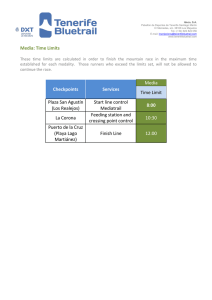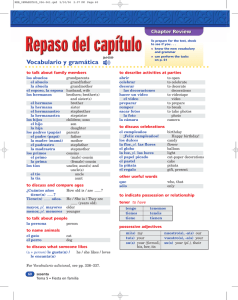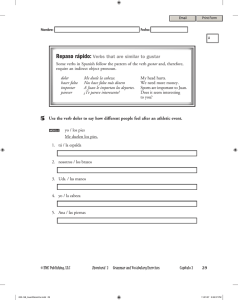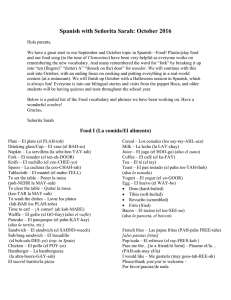Making Words Plural
Anuncio
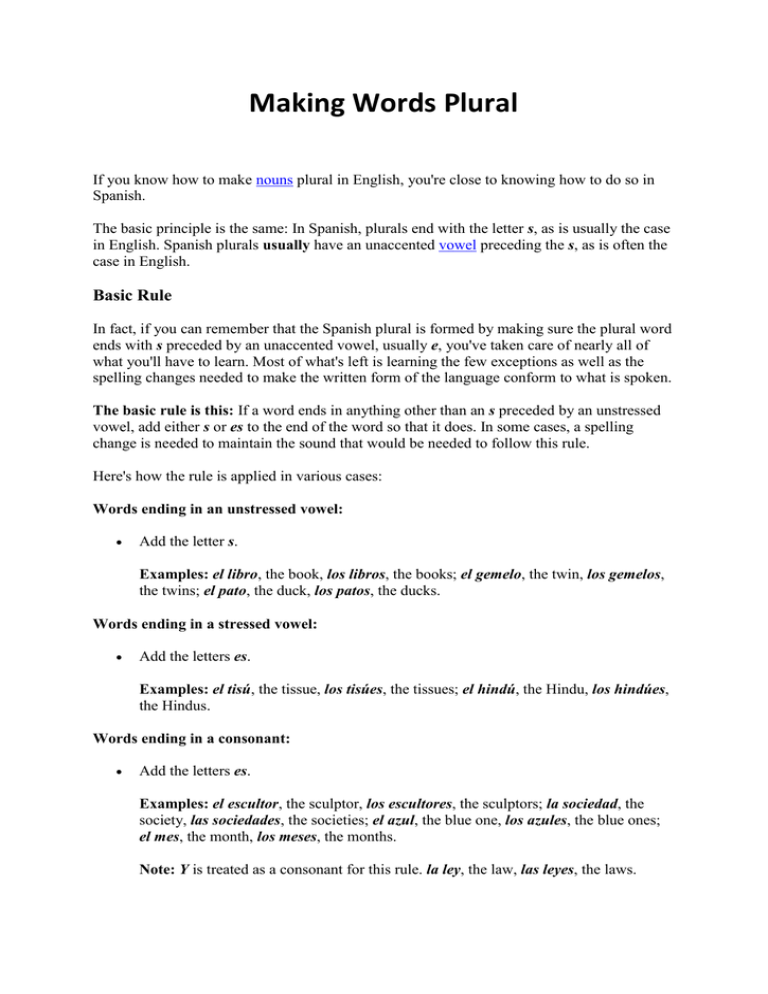
Making Words Plural If you know how to make nouns plural in English, you're close to knowing how to do so in Spanish. The basic principle is the same: In Spanish, plurals end with the letter s, as is usually the case in English. Spanish plurals usually have an unaccented vowel preceding the s, as is often the case in English. Basic Rule In fact, if you can remember that the Spanish plural is formed by making sure the plural word ends with s preceded by an unaccented vowel, usually e, you've taken care of nearly all of what you'll have to learn. Most of what's left is learning the few exceptions as well as the spelling changes needed to make the written form of the language conform to what is spoken. The basic rule is this: If a word ends in anything other than an s preceded by an unstressed vowel, add either s or es to the end of the word so that it does. In some cases, a spelling change is needed to maintain the sound that would be needed to follow this rule. Here's how the rule is applied in various cases: Words ending in an unstressed vowel: Add the letter s. Examples: el libro, the book, los libros, the books; el gemelo, the twin, los gemelos, the twins; el pato, the duck, los patos, the ducks. Words ending in a stressed vowel: Add the letters es. Examples: el tisú, the tissue, los tisúes, the tissues; el hindú, the Hindu, los hindúes, the Hindus. Words ending in a consonant: Add the letters es. Examples: el escultor, the sculptor, los escultores, the sculptors; la sociedad, the society, las sociedades, the societies; el azul, the blue one, los azules, the blue ones; el mes, the month, los meses, the months. Note: Y is treated as a consonant for this rule. la ley, the law, las leyes, the laws. Words ending in s preceded by an unstressed vowel: The plural form is the same as the singular form. Examples: el lunes, Monday, los lunes, Mondays; el rompecabezas, the puzzle, los rompecabezas, the puzzles; la crisis, the crisis, las crisis, the crises. The Exceptions Exceptions to the above rules are few. Here are the most common ones: Words ending in é: Simply add an s. Example: el café, the coffeehouse, los cafés, the coffeehouses. Foreign words: Some foreign words maintain the pluralization rules of the originating language. Examples: los jeans, the jeans; el camping, the campground, los campings, campgrounds; el curriculum vitae, the résumé, los curricula vitae, the résumés. Specific exceptions: A few words simply don't follow the rules. Examples: el papá, the father, los papás, the fathers; la mamá, the mother, las mamás, the mothers; el sofá, the couch, los sofás, the couches. Orthographic Changes Changes in either spelling or accents are needed sometimes due to the phonetic nature of the Spanish language. The rules above still apply — you just need to make sure a plural word is spelled the way it is pronounced, or that it is spelled according to Spanish convention. Here are the orthographic changes sometimes required: Words ending in z: Change the ending zes to ces. Examples: el pez, the fish, los peces, the fishes; el juez, the judge, los jueces, the judges. Words ending in an accented vowel followed by s or n: Eliminate the accent in the plural. Examples: el interés, the interest, los intereses, the interests; el francés, the Frenchman, los franceses, the Frenchmen; el avión, the airplane, los aviones, the airplanes. Words ending in n in an unstressed syllable: Add an accent to the appropriate vowel to maintain the correct stress. Examples: el examen, the exam, los exámenes, the exams; el crimen, the crime, los crímenes, the crimes.
